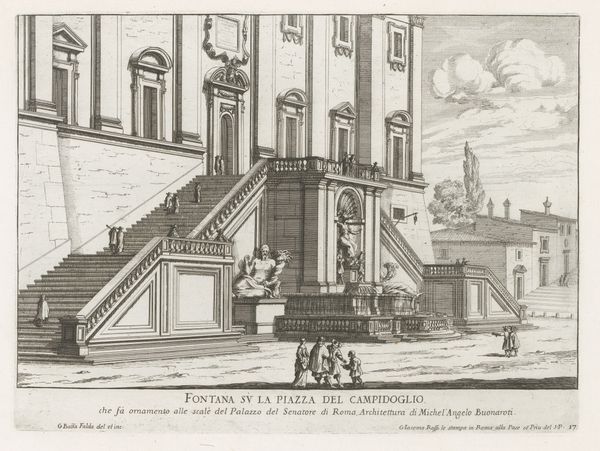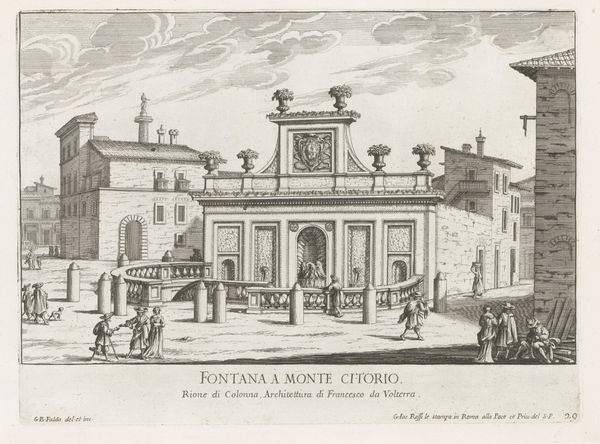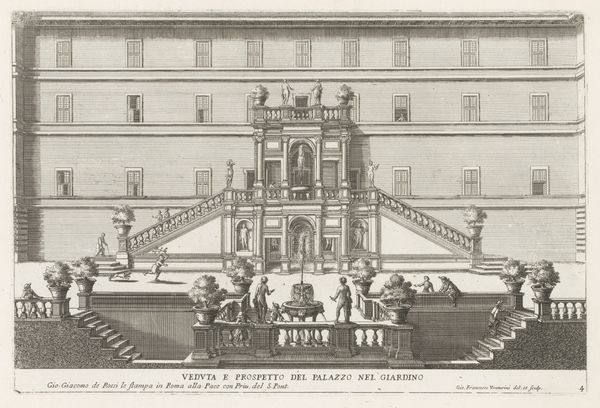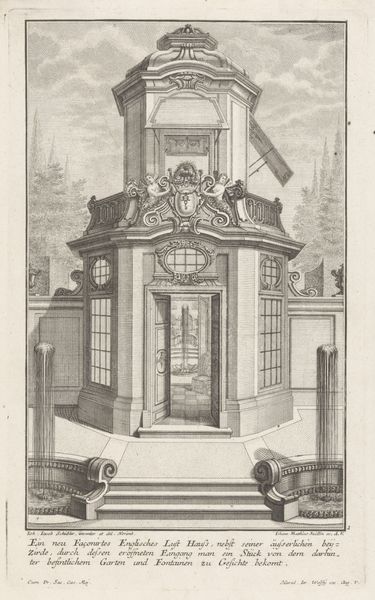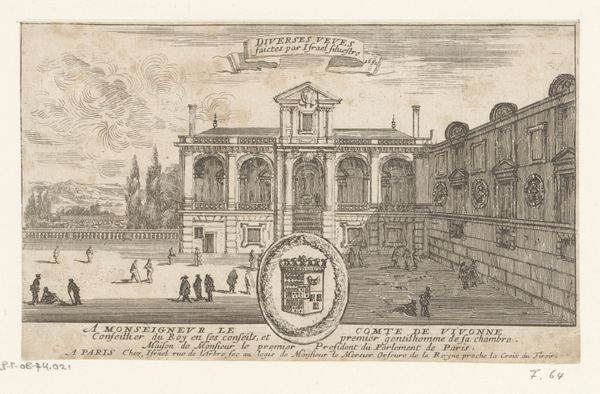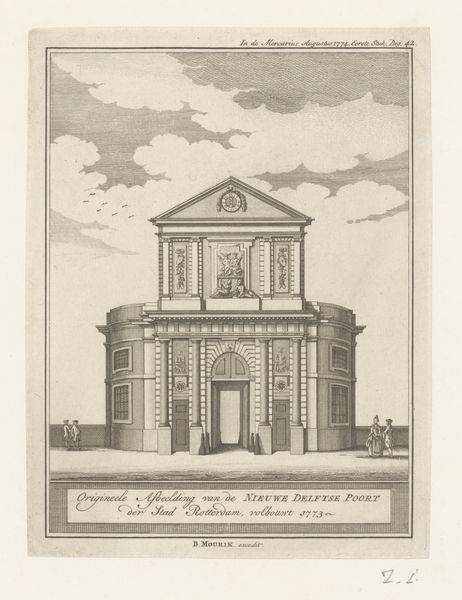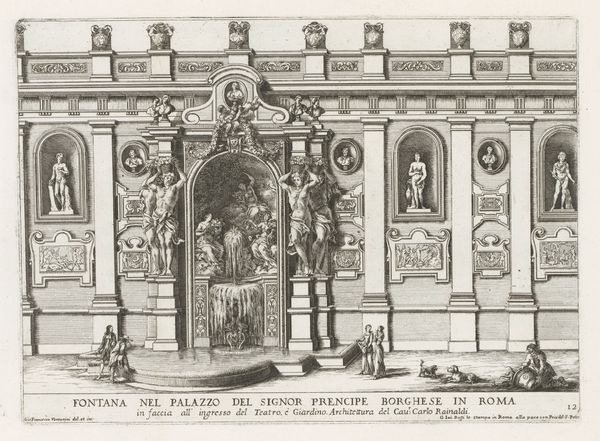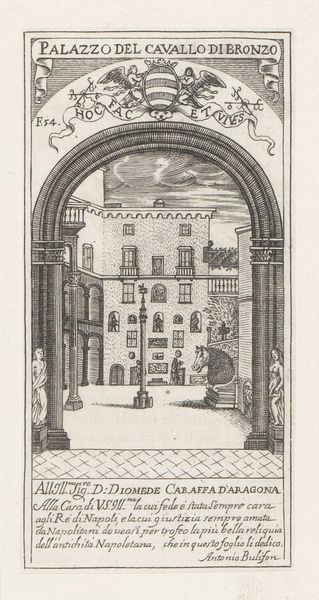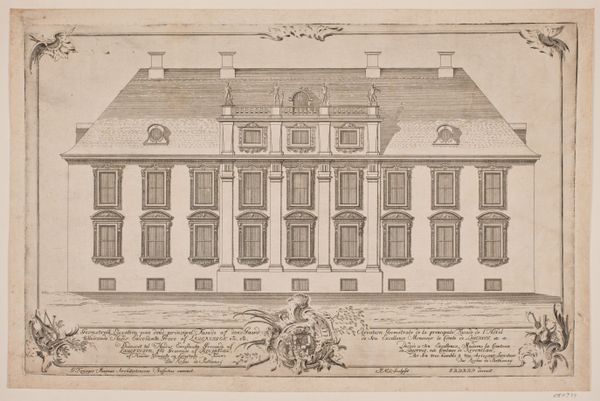
print, engraving, architecture
#
baroque
# print
#
cityscape
#
italian-renaissance
#
engraving
#
architecture
Dimensions: height 216 mm, width 288 mm
Copyright: Rijks Museum: Open Domain
Curator: Here we have Giovanni Battista Falda’s "Fontein bij de Ponte Sisto te Rome," created sometime between 1653 and 1691. This engraving captures a cityscape with architectural precision. What strikes you first? Editor: Its austere quality is immediately evident. The linear precision creates a very structured composition and evokes a formal tone. It looks almost like a blueprint. Curator: Precisely! Note how the very materiality of engraving—the deliberate tooling and labor—conveys the ambitions of papal infrastructure projects and urban planning during that period in Rome. This fountain would have impacted the water distribution networks that influenced where people could live and conduct business. Editor: Yes, and the composition leads the eye directly to the fountain as the central point of interest; note its symmetrical construction and the clean lines that draw attention to its shape and its function. Curator: Look closely and observe the everyday life unfolding around the fountain; see how it subtly speaks volumes about access to resources and its societal impacts at the time. Also notice that Falda signed the engraving, highlighting his role as a skilled worker reproducing the images and ideas of powerful people. Editor: I agree. Furthermore, this precision showcases not just technical ability, but also implies the stability, order, and grandeur that the Catholic Church sought to project. Curator: By framing architecture in the everyday environment, this cityscape provides a glimpse into both its function and its effect on local economies and social interactions. Consider the figures around the fountain - their access or lack of access, becomes part of a social statement. Editor: A valid point. Through examining line, symmetry, and the calculated arrangement of forms, this engraving reveals aspirations to grandeur and order. Ultimately it uses the materials and form to convey an image of timeless power. Curator: Indeed, thinking about the cost of engraving versus other cheaper methods gives clues about why the chosen means matters just as much as what it portrays! Editor: Thinking about the materials involved allows us to think more about how architectural forms can reflect a quest for an ideal and what they aimed to achieve. Thank you for this additional context, it really has provided food for thought.
Comments
No comments
Be the first to comment and join the conversation on the ultimate creative platform.
